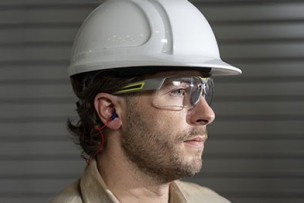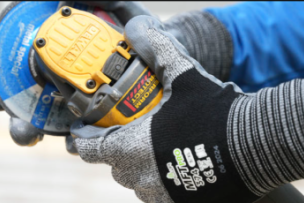Flame Resistance with Broader Chemical Protection
As popular as Tychem® 2000 SFR has been among manufacturing workers, the garment has limits, Bowen says. Many applications call for secondary flame resistance with a rating beyond acids and bases.
“When it comes to flammable atmospheres in some manufacturing environments, alcohols and solvents are also very common,” he says. “That’s where Tychem® 6000 SFR really shines. It expands the range of chemical classes and subclasses that the fabric is going to hold out.”
The Tychem® 6000 SFR offers the same secondary flame resistance and flash fire protection as the Tychem® 2000 SFR but with at least 30 minutes of protection against more than 250 chemical challenges. Applications include oil and gas and industrial chemical processing.
“What’s unique about the Tychem® 2000 SFR and the Tychem® 6000 SFR is that they both have Tyvek® SFR as their substrate,” Bowen says. “Then there is a chemical-resistant coating on the top.”
Bowen says he expects the Tychem® 6000 SFR portfolio to expand beyond coveralls to include a range of garment styles.
Read more: How to Exceed Flame-Resistant Clothing Requirements While Staying Comfortable
Choosing Secondary FR Garments You Can Trust
Not all SFR garments are created equal, although it can be difficult for manufacturing employers to know that. Unfortunately, the information gap can have dangerous consequences when a substandard garment fails to protect a worker from a hazard.
“The challenge we have in the safety industry is that there is no real governing body that keeps personal protective equipment [PPE] manufacturers honest,” Bowen says. “You can print whatever you want in a brochure.”
For example, most manufacturers don’t do permeation testing, Bowen explains. “They do penetration testing, which is not meaningful for hazardous chemicals,” he says. “They’ll claim that they meet NFPA 2113, which isn’t a pass-fail standard. They’ll claim that they test to NFPA 701, a standard for wall covering, draperies and carpeting, which has nothing to do with PPE.”
VIDEO: DuPont Personal Protection Promise
So, do your homework, Bowen tells safety professionals. “Make sure that you understand exactly what you’re getting, how it’s tested, how it’s rated and that it’s going to do the job it needs to do in your specific manufacturing environment,” he says.
Also, find a manufacturer you can trust. “DuPont steps up our game,” Bowen says. “We do permeation testing for the chemical resistance on these garments in the portfolio. And we’ve got burn videos that show the performance of them on an ASTM F1930 fully instrumented mannequin test.”
He adds, “We’re providing garments that people should be confident will perform the way they need to perform in the unlikely event of a thermal exposure. And of course, they’ve got the broad-range chemical protection that we substantiate with our permeation database.”
What chemical hazards can the Tychem® 2000 SFR or the Tychem® 6000 SFR help you protect against? Let us know in the comments.





Talk to Us!
Leave a reply
Your email address will not be published. Required fields are marked *